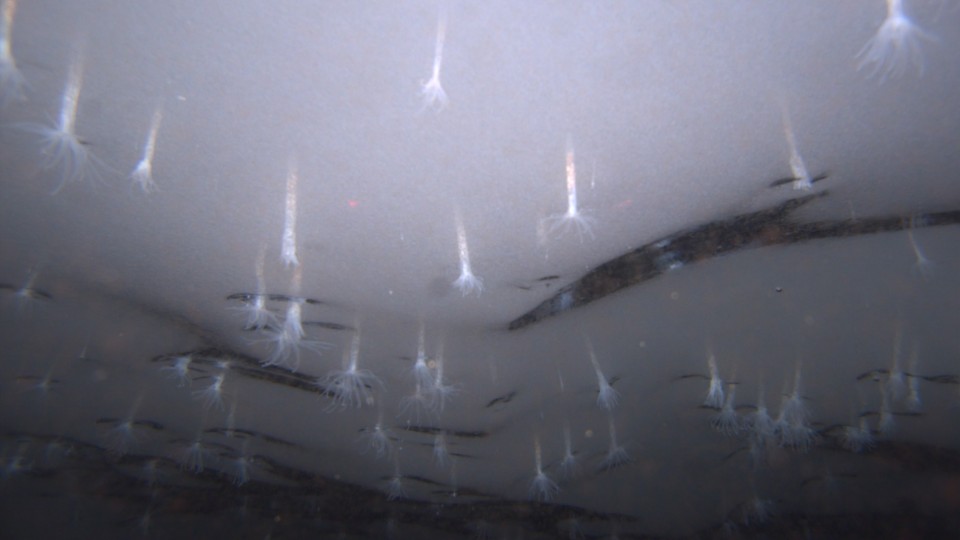· 3 min read
In the News: UNL-led team’s discovery of Antarctic sea anemone

ANDRILL team members literally jumped up and down with excitement when they discovered a new species of sea anemone that lives on the underside of the Ross Ice Shelf. They were using a camera-equipped robot to gather environmental data for their drilling effort. They hadn’t expected to discover any organisms living in the ice, and surely not an entirely new species.
Since then, news about the little creature – which measures less than an inch in length in its contracted state – has traveled virtually from pole to pole, from the Alaska Native News to the Antarctic Sun and many points in between.
The Weather Channel began airing this video on Jan. 24. National Geographic, Smithsonian Magazine, ABC News and the Daily Mail in the United Kingdom were among major organizations whose stories featured the new species.
The sea anemone actually was discovered in December 2010, but wasn’t announced until December 2013, when the PLoS ONE journal published an article describing the new creature and establishing its official name, Edwardsiella andrillae. Edwardsiella is a genus of burrowing sea anemones, while andrillae honors the Antarctic drilling program. ANDRILL’s Science Management Office is based at UNL, with Frank Rack, an associate professor of earth and atmospheric sciences, serving as its executive director.
“It’s important to remember that this discovery resulted from the work of an international team of people working together with public funding,” Rack said. “We really want to share this story because it’s exciting to us and we hope it is exciting to others, but also because it demonstrates how much there is left to wonder about and discover in the natural world.”
University Communications worked with communications staff at the National Science Foundation, which funds the ANDRILL project, to produce simultaneous news releases with photographs of the anemones. NSF staff also produced a video of the images gathered by “SCINI” (Submersible Capable of under-Ice Navigation and Imaging), the robot that spotted the anemones and later collected specimens for study.
NSF used the discovery as a banner on its home page and featured it on its Science 360 website.
Scott Borg, head of the Antarctic Sciences Section for the NSF’s Division of Polar Programs, called it an “astonishing discovery” that shows just how much more there is to learn about the Antarctic, even after 50 years of active U.S. research.
Since the Jan. 16 news releases, scores of articles have appeared on a variety of platforms, including News Tonight Africa, Io9, the International Business Times, LiveScience, countless blogs – including Why Evolution is True, authored by a University of Chicago ecology and evolution professor – and even Practical Fishkeeping.
Rack said he has spoken with other journalists and anticipates there may be more stories in the future about the anemone.
“We hope that stories such as this will inspire young people to stay in school so they can become scientists or engineers and make their own discoveries,” he said.







